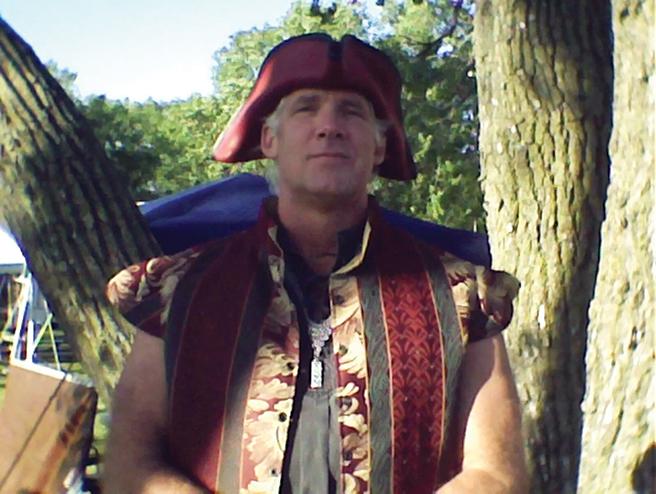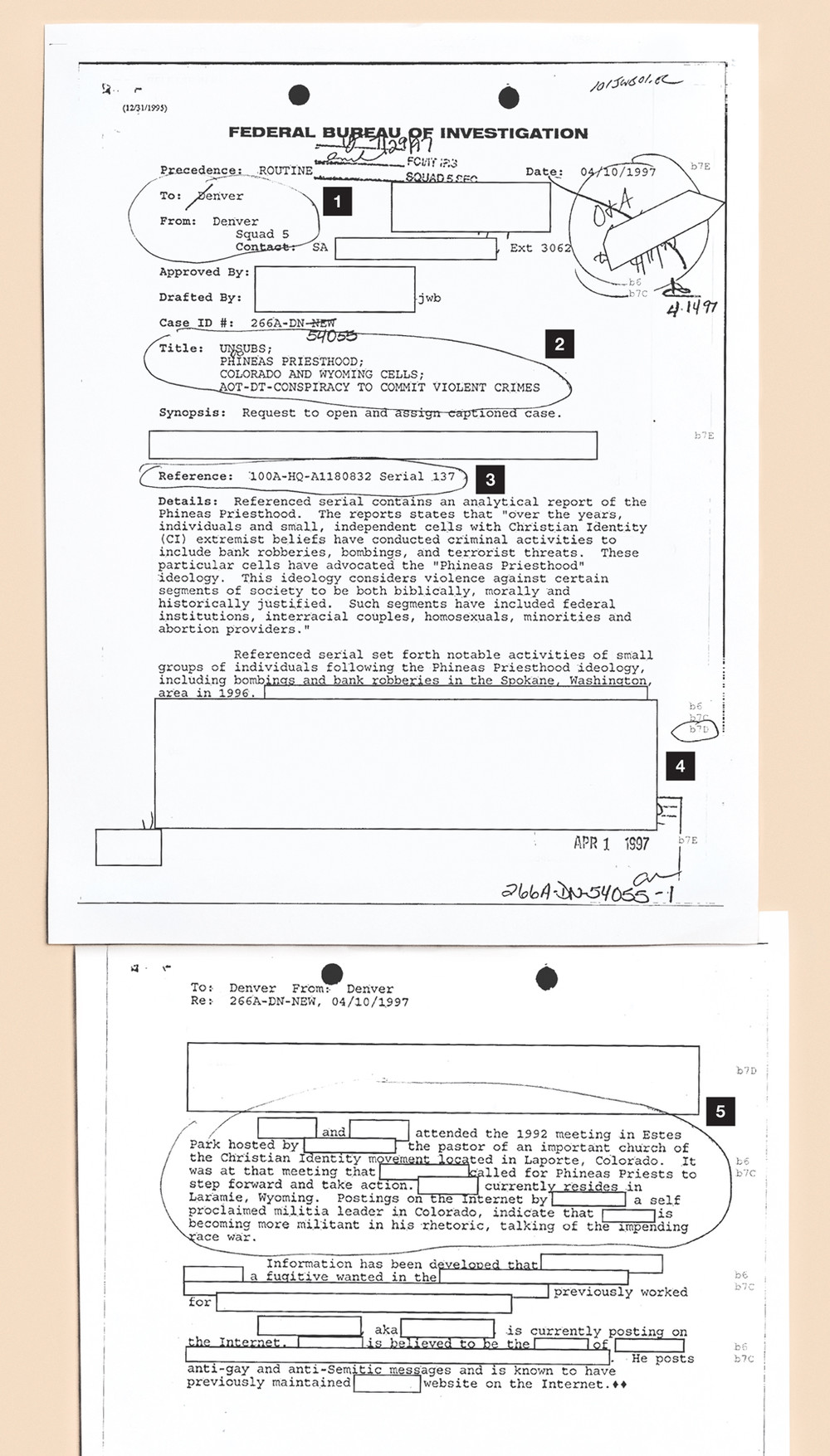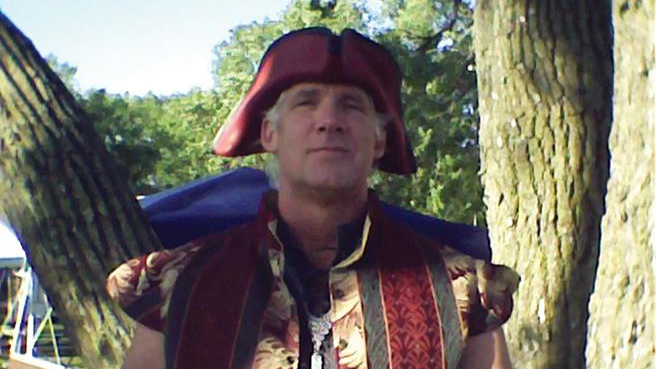
Larry Steven McQuilliams, who identified himself as a high priest of the Phineas Priesthood after going on a shooting rampage in Austin, Texas.
This article was published in the June issue of VICE magazine, before Omar Mateen, a Florida resident and domestic terrorist, brutally murdered 49 people and injured 53 others at an Orlando nightclub in the worst mass shooting in United States history.
Violent right-wing extremist groups are on the rise in the United States. According to a recent report by Mark Potok, senior fellow at the Southern Poverty Law Center (SPLC), the number of hate groups representing far-right ideologies increased from 784 to 892 between 2014 and 2015.
Videos by VICE
Potok attributes the surge, in part, to racist statements about Latinos and Muslims made by Republican presidential frontrunner Donald Trump. He said the real estate mogul’s words have “electrified the radical right.”
These homegrown domestic extremist groups, many of which carry out violent attacks in the name of Christianity, present a far greater threat to Americans than Islamic extremists, but they don’t attract the same type of attention from the media and politicians.
Take, for example, the Phineas Priesthood, a Christian Identity doctrine followed by lone-wolf terrorists. “A Phineas Priest is any individual who commits a ‘Phineas action,’ a reference to an Old Testament story in which an interfaith couple is slain by a Hebrew man named Phineas who is then rewarded by God,” according to the SPLC. “Typically, white supremacists describe Phineas actions as the slaying of interracial couples, but they have included attacks on Jews, non-whites, multiculturalists, and others seen as enemies.” In November 2014, a 49-year-old man named Larry Steven McQuilliams, who identified himself as a high priest of the Phineas Priesthood, went on a shooting spree in Austin, Texas. He opened fire on a federal courthouse, the Mexican consulate, and the Austin Police Department before the cops shot him dead. Inside McQuilliams’s rented van, officers found a copy of the book Vigilantes of Christendom: The Story of the Phineas Priesthood, written by white supremacist Richard Kelly Hoskins. McQuilliams failed to injure anybody during his rampage, but police said when they searched his home, they discovered a map with 34 targets, including two churches.
Following the shooting, we filed a Freedom of Information Act request with the FBI for everything the bureau had on the Phineas Priesthood. About one year after our inquiry, the FBI sent us fewer than a dozen pages of documents dating back to April 1997. The files make it clear that the Phineas Priesthood has been on the FBI’s radar for two decades. The FBI wrote in its accompanying production letter that it likely has additional records, but the released cache sheds light on how the bureau views the group and others like it.

1. This specifies that the FBI’s Denver field office received the file from Squad 5, which seems to be the team that handles investigations into domestic terrorism. “SA” stands for the “special agent” on the case, whose name has been redacted for privacy reasons.
2. “UNSUB” is an abbreviation for “unknown subject” and refers to so-called Colorado and Wyoming cells of the Phineas Priesthood. “AOT” is an acronym for “act of terrorism” and “DT” for “domestic terrorism.”
3. For those interested in understanding how to decipher FBI files, this reference number is important. The code “100A” is a Central Records System classification that means domestic terrorism, the type of alleged offense the FBI was investigating when it opened this file. The acronym HQ indicates this is a “headquarters” file, and the mention of “Serial 137” lets us know this is the 137th document in this particular file.
4. The details section on this page clearly shows that the bureau views Phineas Priesthood members as domestic terrorists, and believes some members were responsible for bombings and bank robberies in Spokane, Washington, in 1996. While a portion of this section is redacted, the exemption cited, b7D, indicates that the FBI obtained this information from a confidential source or informant, and if the details were revealed, it could lead to that source’s identity being disclosed.
5. Here, the FBI case agent lists the reasons for opening up this file and requesting that it be assigned for investigation. A meeting took place in 1992, and Phineas Priests were urged to “take action.” Fast-forward five years, and the FBI has become concerned that someone identifying himself as a Phineas Priest, a “self proclaimed militia leader in Colorado,” has been posting on the internet and “becoming more militant in his rhetoric, talking of the impending race war.” This section goes on to say that the bureau may be looking at a second individual who was posting “anti-gay and anti-Semitic messages” on the internet. But the First Amendment protects hate speech, so it’s unclear what other information, if any, the bureau obtained that would rise to the level of “conspiracy to commit violent crimes.” Twenty years after the FBI created this file, Phineas Priests remain at-large. About a month ago, Morris Gulett (above photo), the self-proclaimed leader of the Aryan Nations, who said Donald Trump’s rhetoric is “admirable from a Patriotic Nationalists point of view,” launched a new extremist church, the Church of the Sons of Yahweh, whose logo incorporates the Phineas Priesthood symbol.
This article appeared in the June issue of VICE magazine. Click HERE to subscribe.




